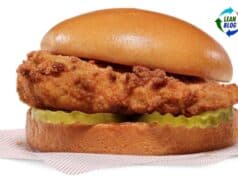Here's a fun video for a Saturday. In England, I love the Yo! Sushi chain of restaurants.
It's basically a continuous flow conveyor belt of sushi. You sit down and take what you want from the belt. The trays are color coded by price. When you're done eating, a staff member adds up your plates by color and gives you a bill.
I took this short video while I was at Heathrow earlier this month:
The times I've been past Yo! Sushis, they seem to do a good job of gauging the sushi inventory levels to customer demand. The sushi has a shelf life (I hope!) so it can't stay on the belt forever. I wonder how much of it is a pull system of sorts — seeing how much of each type of sushi is being pulled by customers, using that information to trigger more production in the kitchen?
Anyway, it's fun to watch that sushi go round and round!
True continuous flow would involve a conveyor belt directly from the sushi chef to me, the customer? The conveyor belt is just a way of circulating inventory… flowing inventory is still inventory, right?
I'm not trying to say Yo! Sushi is “lean” necessarily… I just love the conveyor belt and the restaurant is a fun concept.
Please scroll down (or click) to post a comment. Connect with me on LinkedIn.
Let’s build a culture of continuous improvement and psychological safety—together. If you're a leader aiming for lasting change (not just more projects), I help organizations:
- Engage people at all levels in sustainable improvement
- Shift from fear of mistakes to learning from them
- Apply Lean thinking in practical, people-centered ways
Interested in coaching or a keynote talk? Let’s talk.
Join me for a Lean Healthcare Accelerator Trip to Japan! Learn More










Here is a continuous flow bagel slicer of sorts that I ran into in Boston right after posting the Yo! Sushi video.
LINK
This was cool to watch, but I'd question if it's capital expense that's really necessary. Did they automate a bad process?
i LOVED kaiten-zushi (conveyor belt sushi) when i was a struggling foreign engineer in japan. i could not help noticing that each shop/chain's operations were customized.
for example, regarding freshness. from time to time, the sushi on the conveyor is commonly "discounted" by moving them to a cheaper-colored plate. (prices are indicated by different colored plates.) other shops will instead rearrange batches of sushi onto fewer plates. so three plates of 2x pieces will be quickly put onto two plates of 3x pieces each, an implicit discount popular with students and underpaid engineers. (english teachers often were paid more…) it also means fewer dishes need washing. both forms of discounts are visually obvious and also remind the staff that those servings need to be removed and discarded soon.
it's best to be seated immediately downstream of the serving station, so you get first dibs on whatever is freshest as soon as it's put on the conveyor.
but the trick to eating well at kaizen-zushi in japan is to start with the cheap(er) dishes first, and then gradually moving up-price, all the while keeping an eye out for the above discounts. if you start with the expensive stuff, you won't last until payday! :D
ahh, the memories…
In Japan, I have experienced this system – its called Kuru-Kuru sushi! Fascinating!
Here in the Chicago area we have a number of similar sushi venues which also use the conveyor belt to present dishes to the customer. What’s interesting is to watch what happens to the unpopular items on the belt. After all, fresh sushi is delightful; stuff which has been sitting around for a while can give you a major bellyache.
At one restaurant an assistant removed an item after it had been around the track a few times (I counted 12 in one instance). I suppose this item was either tossed or perhaps consumed by an employee. However, at another restaurant I counted at least three dishes of something that looked like an egg mixed with fish mash (no, it didn’t look any better than I’ve described) go ’round and ’round for at least 40 minutes (I could tell because all three plates were of a unique color and easy to distinguish from the others).
Forty minutes at room temperature is enough to destroy even the most resilient piece of raw fish, don’t you think? Would some new and unsuspecting customer eventually select and actually eat one of these?
Since my observations in these two instances were only casual and totally unscientific, I believe I’ll have to launch a major Lean investigation of sushi practices in North America. This massive undertaking will obviously require an appropriate travel and meal budget. Yes, it will be a tough assignment but, in the end, someone has to do it. So why not me. I’ll report from time to time on my progress. Adam Zak, the Lean Recruiter
[…] after I posted this link with the Yo! Sushi video last week, I went out to run some […]
Comments are closed.